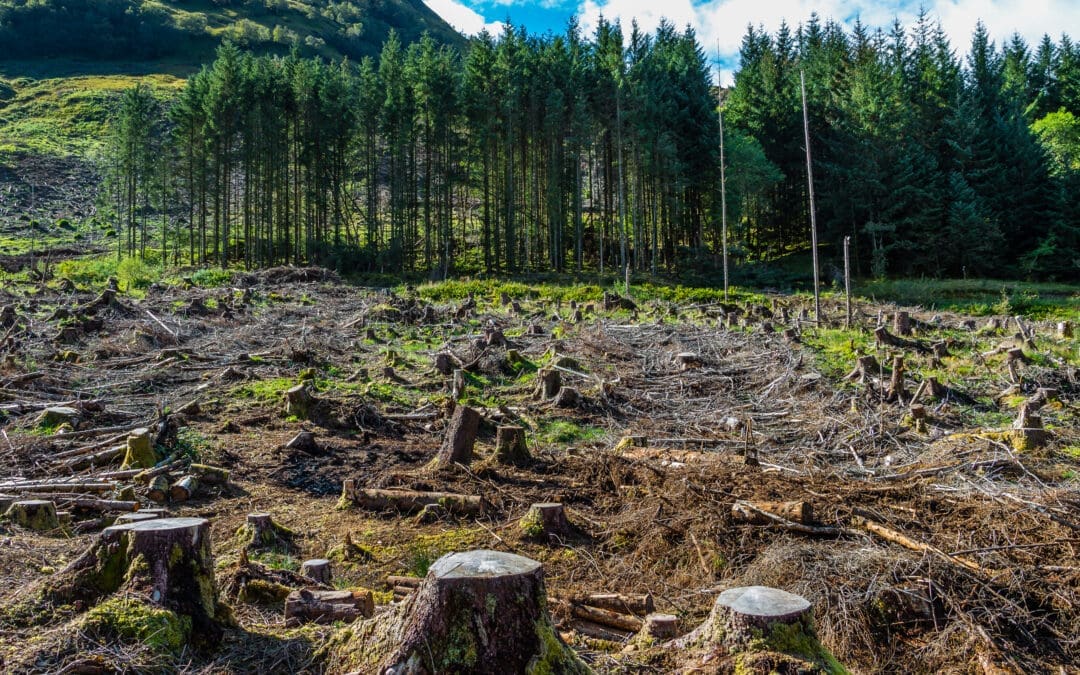Paper and packaging is, in some ways, a unique commodity. Unlike other commodities, paper, pulp, and packaging are critical for every industry, from coffee to furniture.
Coincidentally, paper and packaging as a commodity also has an outsized impact on natural resources and is one of the more visible areas of impact for many companies. In the last decade, companies have begun recognizing the importance of responsible sourcing of paper and packaging, and we have seen a more than 10-fold increase in companies committing to reduce deforestation in their supply chains. Today, a majority of Fortune 500 companies have committed to zero-deforestation or reduced-deforestation supply chains within the next 5 years.
While such a monumental shift is a great signal of progress, a gap still exists between commitment to the goal and actually achieving it. Pulp and paper supply chains are complex and multi-faceted. Typically, there are at least four tiers of suppliers, from converters to paper mills to pulp mills to harvest sites, and oftentimes several more intermediaries. Obtaining full traceability and information about the lowest tiers is challenging, and many companies struggle to obtain information beyond the first tier:

Many Fortune 500 companies use SupplyShift to trace their pulp and paper supply chains and to ensure verified sourcing of wood products. We’ve seen the range of permutations, whether it’s a general survey, a detailed product component assessment, or a large-scale pulp mill/harvest site traceability effort.
We’ve heard our customers’ stories, learned where their assessments have fallen off in the past, and seen how they have transformed their efforts into systems that deliver actionable results year after year.
Whether your organization is just starting to assess your paper and pulp partners, have been doing so for years, or you’re a mid-chain supplier looking to stay ahead, here is a set of considerations for you to incorporate into your next paper, pulp, or packaging assessment.
Planning the Assessment Strategy
Getting down to the pulp mill or harvest site level is an ambitious undertaking. Even with the help of new technologies, it’s difficult to trace every supply line back to those operations. But we’ve seen organizations make calculated efforts to do so, and they’ve seen the effort pay off. They have traced significant percentages of their paper and pulp supply chains to the pulp mill or beyond, and have gleaned actionable insights that allow them to drive toward the changes outlined in their commitments.
Across the board, we’ve seen success in approaches that set clear objectives and outcome expectations from the beginning. If your long-term goals are clearly articulated as tangible, achievable metrics, it’s far less likely for your efforts to become derailed by complications. Going into the assessment building phase with the following two questions answered will ensure your assessment is results-focused as well:
1. What analytical outputs do we need to generate in order to show progress toward these goals?
2. What criteria will we use to rank our suppliers in terms of risk so that we can begin improving?
For paper and pulp specifically, we’ve seen that most companies can succeed by ensuring that their assessment focuses on three key areas:
1. Certification compliance (for facilities, products, or company-wide)
2. Fiber type used in materials (e.g. virgin fiber vs. recovered fiber)
3. Material harvest source/Country or province of origin
These three categories are the most concrete, focused metrics for identifying risk and creating traceability within paper and pulp supply chains.
While there may be a temptation to ask a wide variety of information from suppliers, we find that asking for too much additional information is one of the quickest ways to get a low response rate and receive incomplete or erroneous responses. Pre-planning analysis and clearly understanding how each question fits into the risk strategy oftentimes helps avoid extraneous work for both buyers and suppliers.
Picking a Tool
Once companies have made the commitment to responsible sourcing, enthusiasm for reaching goals and affecting change is high. Information management is, at first, seen as a means to an end — as it should be. Unfortunately, without the right tools, most organizations get stuck in the Information Collection phase. Many end up spending so much time and effort on data collection that the process itself becomes an end in itself, not the means to an end. With the correct tools, data collection should be simple and scalable, so that your organization has time and resources left over to drive change and improvement.
However, most companies are still clinging to the idea that Excel can be used to collect ample and accurate data on complex supply chains. We know from experience that Excel is a suboptimal tool for supply chain data management. In most cases, it has not, and will not, work. In fact, it’s not at all uncommon for us to hear from customers and prospects that they have several years of Excel sheets filed away somewhere that are virtually unusable.
There is a wide variety of supply chain assessments and tools available on the market that optimize and simplify data management for supply chains. Frequently they are focused on specific aspects of supply chain data management, whether by sector or by topic.
For paper and pulp supply chains, any tool you choose has to have the ability to collect information at multiple tiers. You should be able to roll that information up into real-time analytics with little to no need for manual analysis, and you should be able to easily turn your results into reporting metrics and traceability views.
It’s equally important to pick a tool that emphasizes ease of use and value sharing for your suppliers. Paper and pulp suppliers provide the same information time and time again each year. They should be able to save time and effort by reusing those responses across a variety of shared metrics. Moreover, if they put in the effort to respond, they should be able to see how they rank in comparison to their peer suppliers, so they know what areas they need to improve in.
By using smarter tools and goals-oriented approaches, the effort required to conduct an assessment will decrease, and shared insights will become more widely available. To expedite this process, it’s important to align your organization closely with the emerging standards for pulp and paper assessments.
Seek a Standard, Join a Network
At SupplyShift we believe that when organizations collect data in silos, progress toward widespread change will continue to be slow, and suppliers will continue to respond poorly to a barrage of disparate requests.
We have been working with sustainability leaders and advisory groups, such as The Forest Trust, Rainforest Alliance, and World Wildlife Fund, to develop standardized questions sets that quickly weigh your supply chain against key metrics and enable your suppliers to avoid duplication of effort. Whether you’re just starting out, are in the middle of an Excel effort, or want to switch to a purpose-built tool, adopting a standard, consultancy-vetted approach is a great way to recalibrate your goals.
SupplyShift Essentials: Pulp, Paper, and Packaging is designed to streamline the assessment process for organizations looking to start out, or even re-focus their approach. Choose a general company-level assessment, a facility level sourcing assessment, or a product-focused materials and sourcing assessment, and join the smart network for responsible timber, pulp, and packaging.



